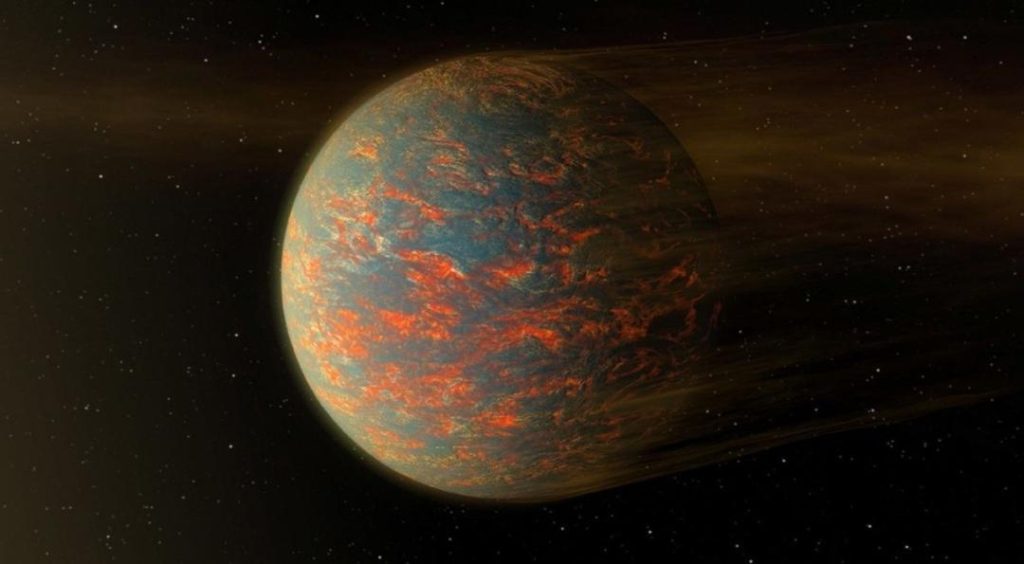
Newly-Discovered Super-Earth Heats Up and Freezes Every 300 Days
In a groundbreaking discovery, scientists have uncovered a new “super-Earth” orbiting a Sun-like star just 20 light-years from our planet. This remarkable find has left astronomers enthralled, as the planet’s unique orbit takes it on a wild ride from scorching heat to freezing temperatures, with the temperature fluctuating wildly every 300 days.
A “super-Earth” is a planet that is larger than our own Earth but smaller than the gas giants like Neptune and Uranus. This newly discovered super-Earth, which has been given the designation K2-141b, is an extraordinary example of such a planet.
According to NASA scientists, K2-141b orbits its star in an oval shape, which is responsible for the extreme temperature fluctuations it experiences. For the first part of its year, the planet is engulfed in intense heat, with surface temperatures reaching as high as 3,600 degrees Fahrenheit (2,000 degrees Celsius). This is due to its close proximity to the star, which is similar to our own Sun in terms of size and temperature.
However, as K2-141b continues on its journey, it begins to move away from the star, and the temperature drops dramatically. The planet is then plunged into a deep freeze, with surface temperatures plummeting to a chilly -400 degrees Fahrenheit (-240 degrees Celsius). This extreme temperature fluctuation occurs every 300 days, making K2-141b one of the most unique and fascinating planets discovered so far.
The discovery of K2-141b was made using NASA’s Kepler space telescope, which has been instrumental in the detection of thousands of exoplanets in recent years. The telescope uses a technique called the transit method, where it measures the dimming of a star’s light as a planet passes in front of it. By analyzing the data, scientists can determine the size and orbit of the planet.
“This is a fascinating discovery that highlights the diversity of planetary systems in our galaxy,” said Dr. Jessie Dotson, a NASA scientist involved in the discovery. “The extreme temperature fluctuations on K2-141b make it an ideal target for future studies, and we’re eager to learn more about this remarkable world.”
The discovery of K2-141b also raises interesting questions about the potential for life on this planet. While the extreme temperatures may make it difficult for life as we know it to exist, it’s possible that some form of microbial life could thrive in the planet’s crust or in underground oceans.
As scientists continue to study K2-141b, they may uncover even more surprises about this remarkable planet. With its unique orbit and extreme temperature fluctuations, K2-141b is sure to capture the imagination of astronomers and the public alike.






